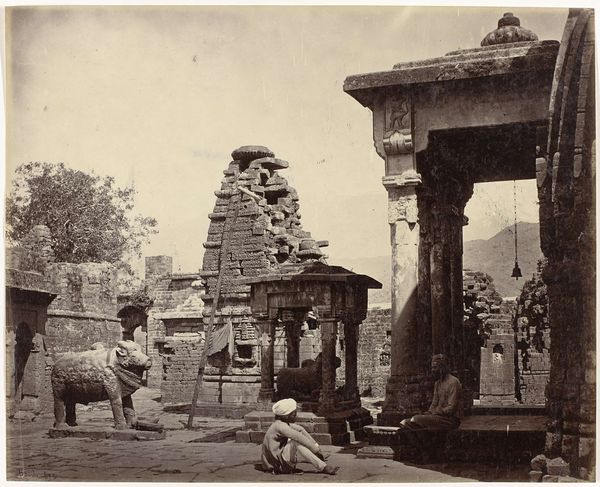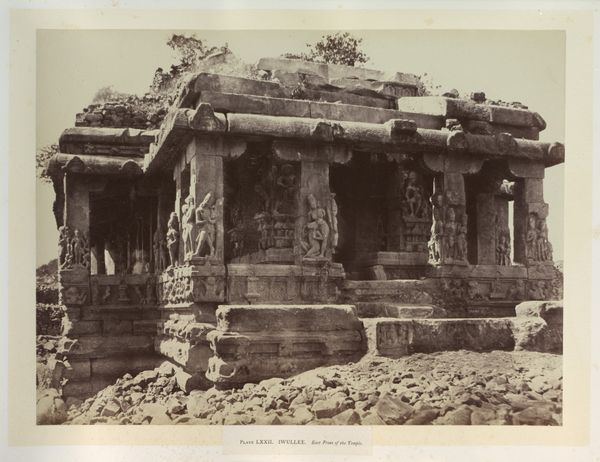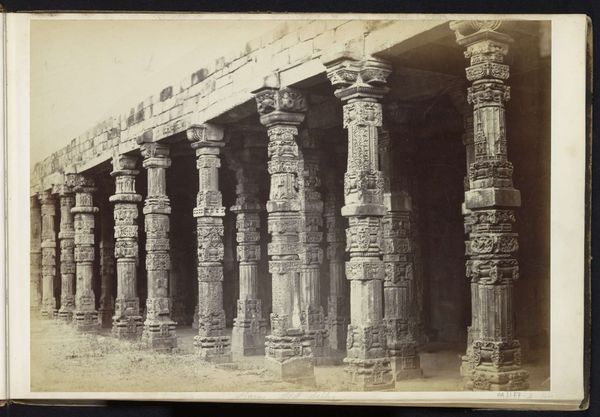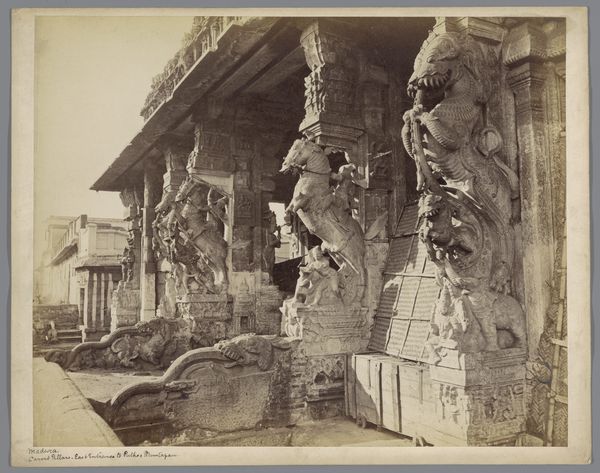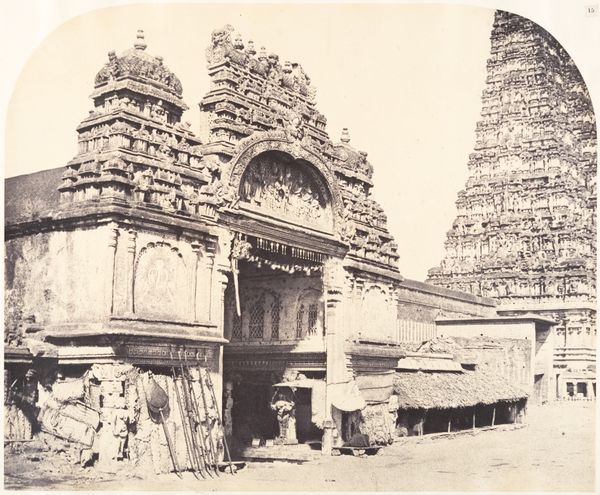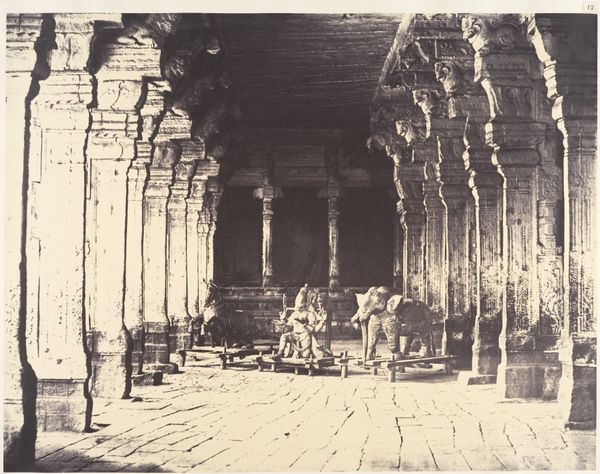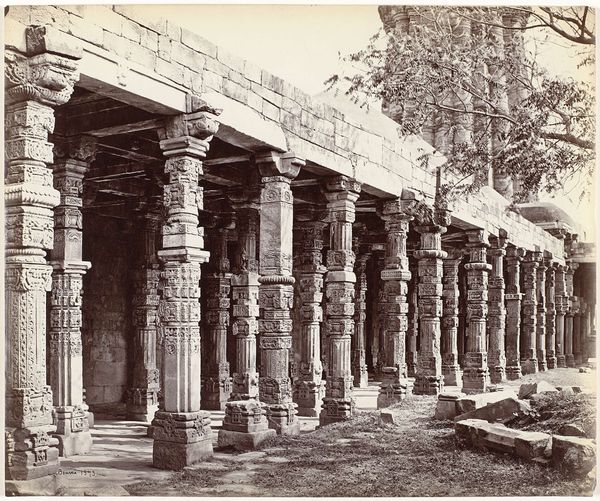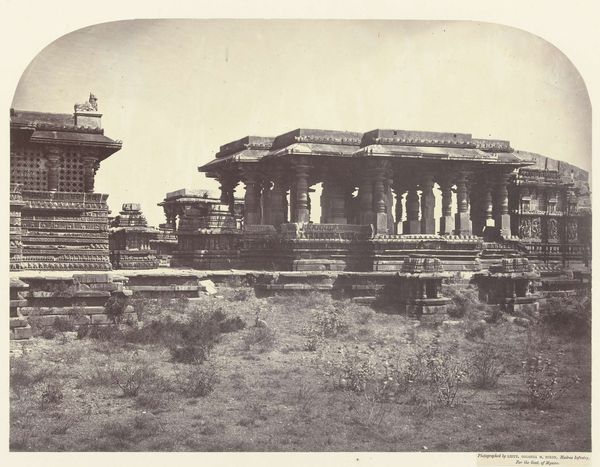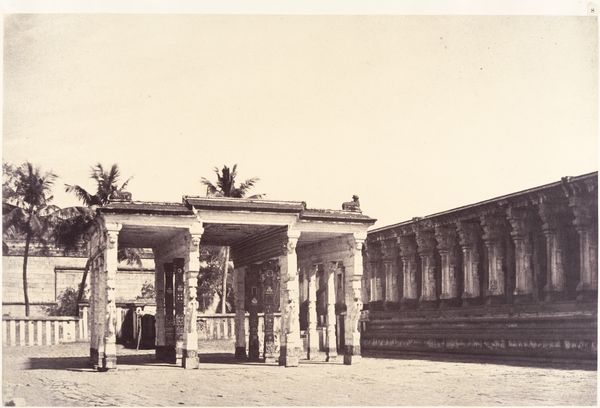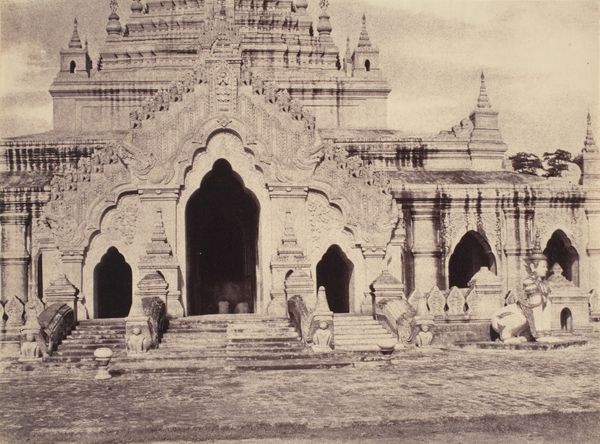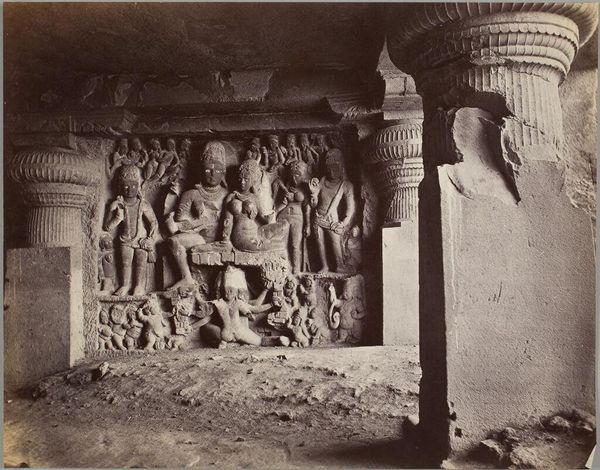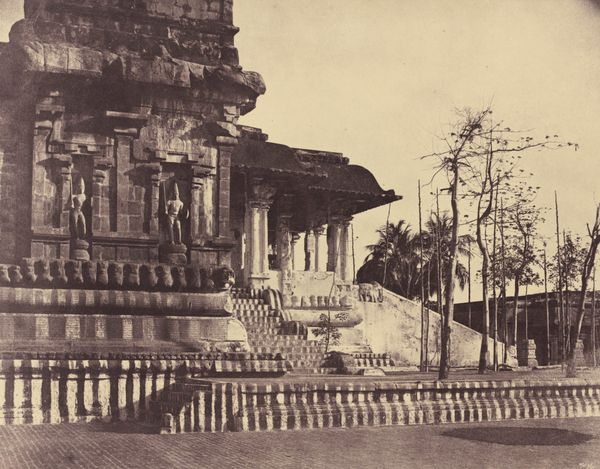
albumen-print, photography, sculpture, albumen-print, architecture
#
albumen-print
#
narrative-art
#
asian-art
#
landscape
#
historic architecture
#
photography
#
ancient-mediterranean
#
sculpture
#
19th century
#
albumen-print
#
architecture
Dimensions: 9 1/2 x 11 1/2 in. (24.13 x 29.21 cm) (image, sheet)
Copyright: Public Domain
Editor: So, here we have Samuel Bourne's 1869 albumen print, "Temple of Vishnu." I'm immediately struck by the contrast between the monumentality of the temple and the seemingly casual presence of the figures in the foreground. How do you interpret this work? Curator: The juxtaposition you observe is key. Bourne’s photograph, taken during the British colonial era, isn’t simply a neutral depiction. It raises complex questions about power, representation, and the gaze. The temple, a sacred space, is captured by a foreign lens, mediated through colonial aesthetics. Editor: That makes me think about the figures in the foreground. They almost seem staged. Curator: Exactly. Their presence isn't incidental. How do they relate to the temple itself? Are they simply bystanders, or do they serve to reinforce a certain narrative about India for a Western audience? The Western gaze often exoticized and orientalized its subjects, rendering them passive or picturesque elements within a grand landscape or historical scene. Editor: So, it’s less about documenting the temple and more about creating a particular image of India? Curator: Precisely. Consider also the albumen print process itself. It flattens the image, creating a specific aesthetic. Bourne chose this technique. What does it say about the politics of representation? Whose story is being told, and for whom? We must recognize the role of photography in constructing and perpetuating colonial narratives. Editor: That's fascinating. I never considered how the photographic process could itself be a form of interpretation, or even a statement. I see how understanding the historical context is essential to unpack the layers of meaning in this image. Curator: And recognizing our own position as viewers within this historical continuum is just as crucial. Let’s consider how this image intersects with contemporary discussions about cultural appropriation and representation.
Comments
minneapolisinstituteofart about 2 years ago
⋮
In a quest for the picturesque, in 1863 Samuel Bourne left England to join a community of photographers in India, then under British rule. Over less than a decade, Bourne—and a team of South Asian porters carrying supplies of chemicals, glass plates, and a mobile darkroom—crisscrossed the subcontinent to produce over 2,500 photographs of the landscapes and architectural wonders of the growing British Empire. Bourne was gifted at capturing both scale and detail, and these images provide context for many other works in this gallery—note the latticework railings found at Agra Fort. These images convey a sense of discovery, but also an outsider’s perspective. For instance, the Raganatha Temple (about 900s ce) is one of the world’s largest active temple complexes; yet, in this picture, taken at dawn and strategically populated, the site appears remarkably quiet, evoking a romantic vision of a foreign land, ideal for cultural and commercial exploitation.
Join the conversation
Join millions of artists and users on Artera today and experience the ultimate creative platform.

